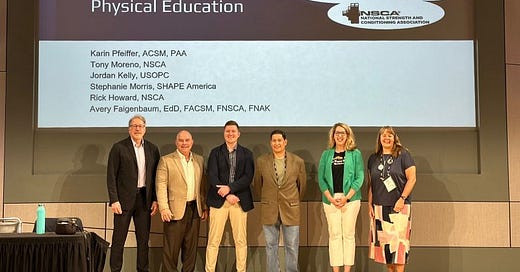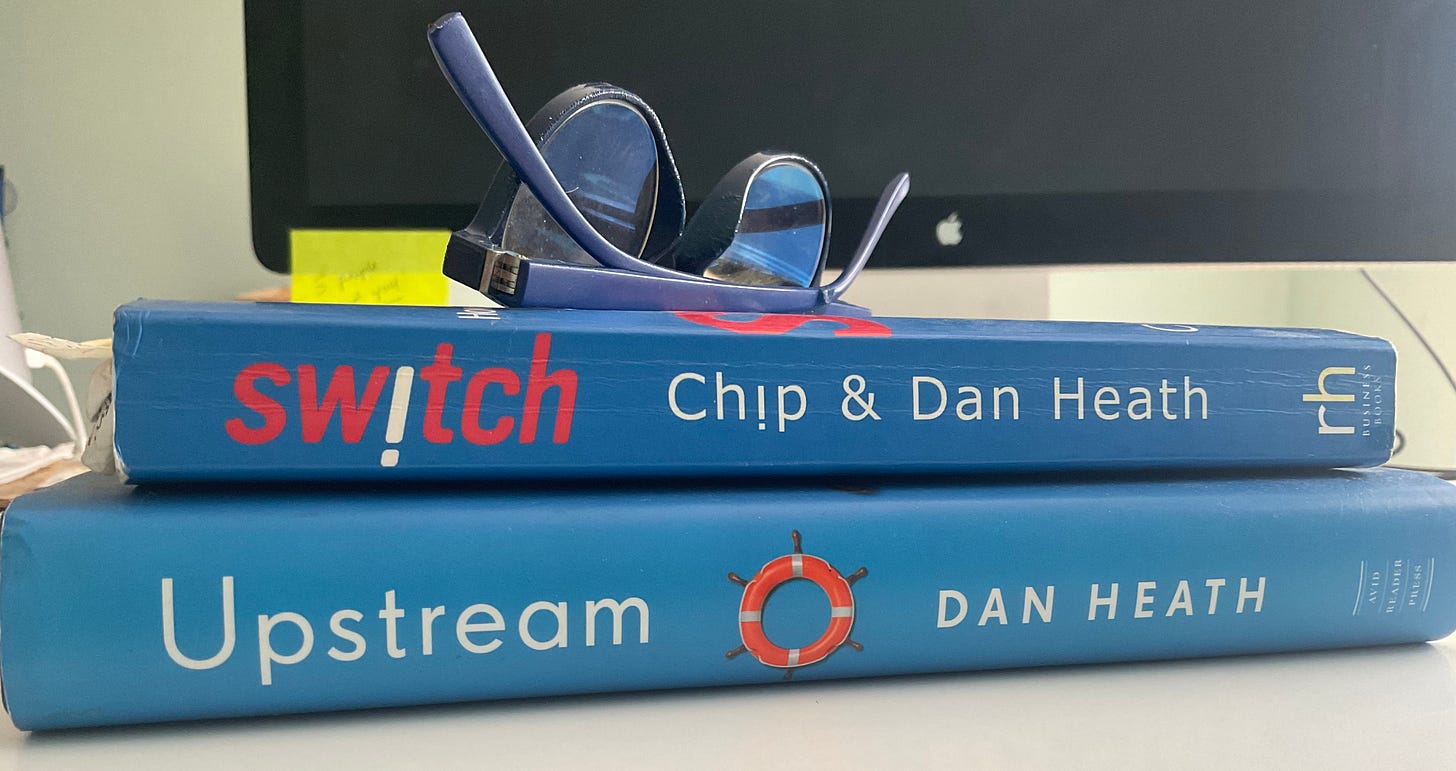Many of us acknowledge the ills of youth sport and the general lack of physical activity, physical fitness and physical literacy among American youth. In January 2025 I posted two pieces specific to the U.S. youth sport crisis. In today’s blog, I’ll highlight a current and ongoing attempt by major U.S. organizations representing youth sports, physical education, exercise science and sports medicine, public health, coaching, and strength & conditioning. The effort which will be highlighted goes by the tag line - Collective Impact.
The Formation of the Collective Impact Group
Around 2018, myself and Drs. Tony Moreno and Rick Howard partnered to raise awareness and educate on the principles of long-term athlete development (LTAD) with the hopes of driving implementation. As we held our event, called the LTAD Playground, across the U.S., Rick began talking about this idea of collective impact - the bringing together of key stakeholders and organizations with a common agenda to solve a problem. As Rick and Tony represented the National Strength & Conditioning Association (NSCA) at the Joint Commission on Sports Medicine & Science meeting, they steer-headed the formation of the Collective Impact group that consists of SHAPE (physical education and health), the American College of Sports Medicine (ACSM), the Physical Activity Alliance, the NSCA, United States Center for Coaching Excellence (USCCE), and the USOPC.
The Collective Impact Symposia
This group is now taking the idea and vision on the road, hitting all the major national conferences. They have presented at SHAPE and ACSM, and will be at NSCA next month.
In the symposia, they discuss the promotion and policy implications of LTAD and the U.S. Athletic Development Model (ADM), and how LTAD/ADM can be infused into policy and address various “hot topic” issues in youth sports such as:
how LTAD/ADM fits into the National Physical Activity Plan
how the National Physical Education Standards and National Coaching Standards complement LTAD/ADM
how the USOPC ADM informs policy across all National Governing Bodies
the importance of a youth coaching and/or fitness certification
Like many, if not all, of us agree upon, the overall aims are to enhance the community youth sport experience, promote quality physical education and coach education, and improve the health and well-being of all youth.
The Elephant in the Room
Ideas, plans, white papers, think tanks, conferences are all great but ….. how do we actually get this to happen?
I attended the recent 2025 annual ACSM meeting in Atlanta where the group presented. At the end of presentation, I stepped up to the microphone: “Hello, my name is Joe Eisenmann and my background and entire career has been spent on the physical side of youth athletic development. But, my question is completely on the other side. This is my question: ‘How, what and who will address the complex socio-cultural and behavioral aspects and the behavioral economics of changing (hearts and) minds and the U.S. youth sports culture at the individual and local level?’”
The question was acknowledged by the panel as very important to the success of this groups (and our collective) efforts and vision.
I listened as Jordan Kelly of the USOPC responded to my question, and then respectfully raised the point which I brought up in the previous blog on the youth sports crisis focusing on NGBs - and more specifically that not many grassroot coaches or parents even know about the ADM or who or what an NGB is!
I continued with some personal experiences (and challenges) in trying to discuss and persuade grassroots coaches, parents and other stakeholders to adopt best practices in youth athletic development. This was further exemplified by one panel member who recently served as the president of a local rowing club in which she experienced the “blatant disregard for best practices” among coaches and parents.
Those with the Fewest Initials Will Have the Most Impact
Thus, the implementation of our efforts have significant barriers. As others on the panel continued to respond to the question, my good friend and colleague Dr. Tony Moreno stated that “the people who will make the biggest difference are not those who write the white papers or plans but those who have the fewest initials behind their name.” He is referring to the coaches and parents in grassroots programs - in our neighborhoods and communities. But again, we need to reach them, make them aware, get them to buy-in, be a leader and champion of implementation, and then to hold others accountable to the best practices of youth athletic development.
Part IV: Coming Soon
This brings me to mention two of a few books on human and organizational behavior that I read about 5+ years ago when I started thinking about the question that I asked. I will list them here and then provide a summary with insights into changing youth sports in part IV of this series on the youth sports crisis…so please stay tuned.
Upstream: The Quest to Solve Problems Before They Happen
Switch: How to Change Things When Change Is Hard
In closing, I whole-heartedly wish the Collective Impact group and all of us who are interested in a Utopian LTAD model well. Godspeed!
P.S. Please share your comments on this matter.







'Those with the fewest initials...' how true. But where does the funding go? In the UK, it goes (and stops) with the administrators in the NGBs: more centralised roles (and salaries). Instead of funding going to upskill coaches in local areas and help them obtain funding.
Ugh. I get fed up with NGBs thinking the clubs are there to justify their existence instead of the other way around.
You are right in what you say. However, until we bring in practitioners who have worked with youth at the base levels and create workshops with parents and youth sport organizations who will always be the coaches at the grass roots levels, we are again just talking. These volunteers at this level, not only want to know what but how to implement what we have been saying for 30-40 years.
I refer back to Simon Senek"s Golden Circle, Why/How/What.
The research has been done, we know it needs to happen. As Josef Drabek say in his book, Children and Sports Training: How Your Future Champions Should Exercise to Be Healthy, Fit, and Happy.
It starts with quality Physical Education.
I have said this in many presentations NSCA and others. Everyone is an athlete who has a body. Some just better than others
Youth Strength and Conditioning /Physical Education should emphasize:
1. Physical Literacy
2. Teach before you Train
3. Stabilization before Strength
4. Bodyweight before Barbells
5.Range of Motion before Resistance
6. Basic Movement before Sport Specific
We are doing a poor job on Fundamentals, then jump immediately to Train to Win.
As said in LTAD Canada:
Preferred Sequence:
* Create the Athlete
*Make a player out of the athlete
1. Have a PLAN
2. Build a FOUNDATION
This is the PROCESS
TECHNIQUE:
Teach the Process
Not the Product
Just my opinion